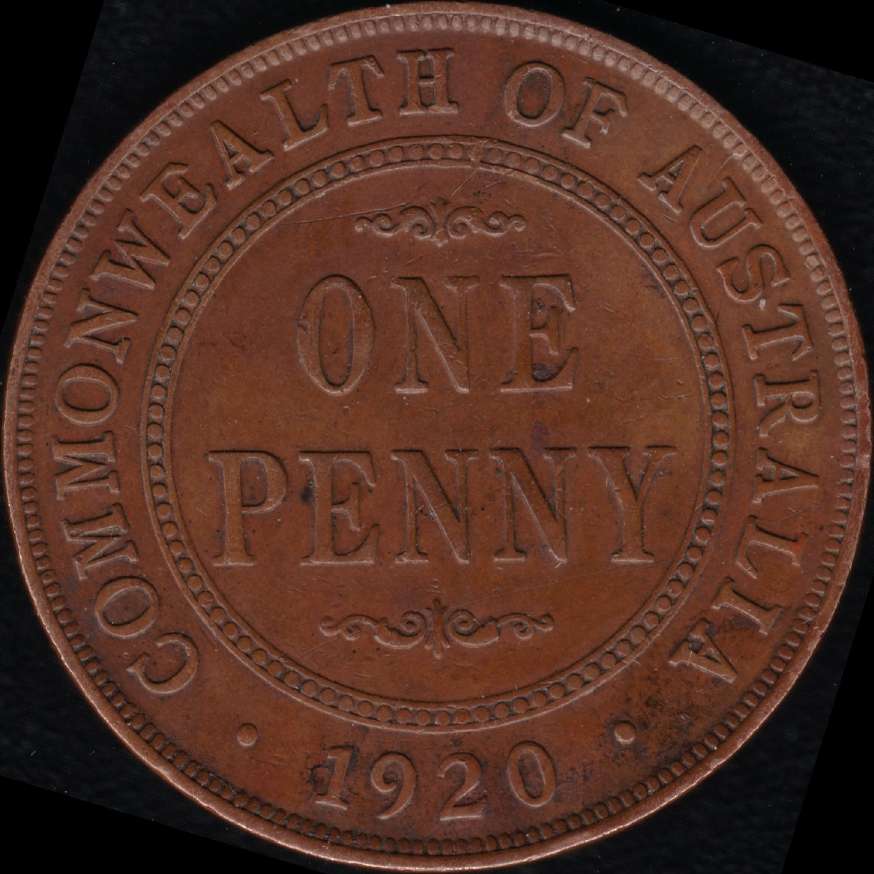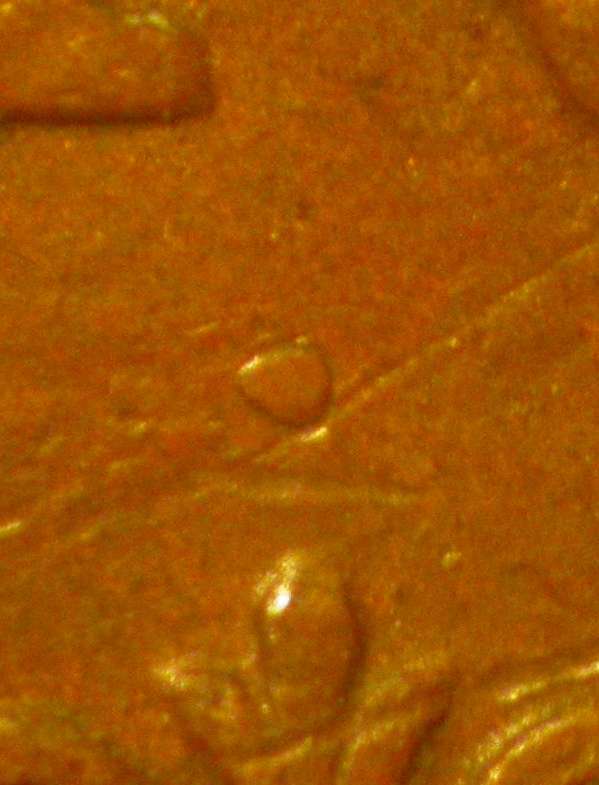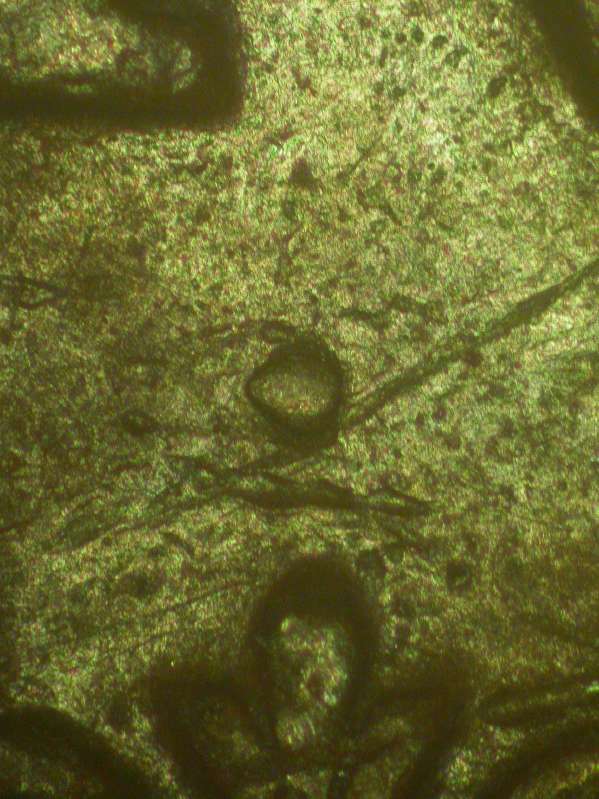 |
 |
|
P20S-1C-/./ |
|
Designation |
P20S-1C-/./ |
|
Mint |
Probably Sydney |
|
Mint mark |
Dot over lower scroll |
|
Mintage |
Four specimens known so far |
The pictures on this page are of the 1920 penny discovered a few days ago by
Geoff Raynes in Kalgoorlie. They are reductions from a 1200dpi scan.
The assignment of the responsibility for striking the coin to the Sydney Mint
must be regarded as tentative.
The coin weighs 9.19 grams which is a little below average for 1920 pennies and
for KGV pennies in general but still within reasonable bounds. I checked the coin
against two distinct samples of circulated George V pennies. The first sample contained
sixteen coins of various dates, the second comprised twenty-three coins, all 1920
pennies. The analysis is shown below:
|
|
1920 pennies | |
|
Number of coins |
|
|
|
Lightest |
|
|
|
Heaviest |
|
|
|
Average |
|
|
|
Standard deviation |
|
|
This means that the Raynes specimen is about one standard deviation lighter than
average in both cases which is certainly within reasonable bounds.
An oddity (pointed out by Paul Holland) is that the coin has a well-formed obverse
rim. That is unusual for 1920 pennies minted in Sydney which usually exhibit denticles
fused with the rim. However, there is no certainty that this coin was actually struck
in Sydney, and even if it were, then perhaps we may attribute the different impression
to the London pattern obverse die cloned in Melbourne rather than the Calcutta pattern
dies supplied from Calcutta and finished in Melbourne.
 |
 |
 |
Normal (halogen) lighting |
 |
View through lambda plate. |
The photo-micrographs show that the dot is somewhat pear-shaped. All the other
specimens of 1920 pennies with a dot over the lower scroll that I examined had smaller,
perfectly round dots. The odd shape of the dot on the Raynes specimen does not imply
that the coin is fake as we know that the dots were added by hand to the dies at
the workshops in the Melbourne Mint. The dots vary somewhat in size as well as position.
The interesting question is where was this coin minted? Sharples has suggested
that coins with a dot over the lower scroll were struck in Sydney. If that is the
case then this coin must have been struck with an obverse die left over from the
shipment of cloned dies sent from Melbourne in July 1920 along with the 1919 reverses.
The existence of this coin would tend to support Sharples' tentative allocation
of dots to mints.